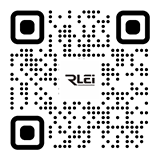Types of relays
Publication Time:
2022-10-26 15:17
There are many types of relays, which can be divided into voltage relay, current relay, time relay, speed relay and pressure relay according to the input quantity, electromagnetic relay, induction relay, electric relay and electronic relay according to the working principle, and control relay and protection relay according to the purpose. According to the input quantity change form can be divided into whether there is a relay and measuring relay.
The presence or absence of relay acts according to the presence or absence of input quantity. The relay does not act when there is no input quantity, and the relay acts when there is input quantity, such as intermediate relay, general relay and time relay, etc.
The measurement relay operates according to the change of the input quantity. The input quantity always exists during operation. The relay will only operate when the input quantity reaches a certain value, such as current relay, voltage relay, thermal relay, speed relay, pressure relay, liquid level relay, etc.
Electromagnetic type relay
Most relays used in control circuits are electromagnetic relays. Electromagnetic relay has the characteristics of simple structure, low price, easy use and maintenance, small contact capacity (generally below SA), large number of contacts and no main and auxiliary points, no arc extinguishing device, small size, rapid action, accurate, sensitive and reliable control, etc., widely used in low-voltage control system. Commonly used electromagnetic relays include current relays, voltage relays, intermediate relays and all kinds of small general relays.
The structure and working principle of electromagnetic relay is similar to that of contactor, which is mainly composed of electromagnetic mechanism and contacts. Electromagnetic relay has DC and AC two kinds. A voltage or an incoming current is added to both ends of the coil to generate an electromagnetic force. When the electromagnetic force is greater than the spring reaction force, the armature is activated to make the normally open and normally closed contact action. When the voltage or current of the coil drops or disappears, the armature is released and the contact is reset.
Thermal relay
Thermal relay is mainly used for overload protection of electrical equipment (mainly motor). Thermal relay is an electrical appliance that works on the principle of current thermal effect. It has the reverse time-limit action characteristic similar to the allowable overload characteristic of the motor. It is mainly used with contactor to protect the three-phase asynchronous motor from overload and phase break. If the overcurrent is not serious, the duration is short, and the winding does not exceed the allowable temperature rise, this overcurrent is permitted; If the overcurrent situation is serious and the duration is long, it will accelerate the aging of the motor insulation and even burn the motor. Therefore, the motor protection device should be set up in the motor loop. There are many kinds of motor protection devices in common use, the most commonly used and the most common is bimetallic chip thermal relay. Bimetallic chip thermal relays are all three-phase, with and without phase break protection.
Time relay
A time relay is used to control time in a control circuit. There are many kinds of it, according to its principle of action can be divided into electromagnetic, air damping, electric and electronic, according to the delay mode can be divided into power delay type and power delay type. Air damped time relay is based on the principle of air damping to obtain delay, it is composed of electromagnetic mechanism, delay mechanism and contact system. The electromagnetic mechanism is direct acting double E type core, the contact system uses I-X5 type micro switch, and the delay mechanism uses air bag damper.
Previous
Related News
The use of relays in our home is very important, which can provide the most basic life guarantee for home life. However, we should also pay attention to the use of relays to avoid unnecessary troubles. Then what is the function and principle of relay, and the correct use of relay, do you understand? Now let's find out.
Relay is a kind of electric control device, is when the change of the input quantity to meet the specified requirements, in the electrical output circuit to make the controlled quantity of a predetermined step change of an electrical appliance.
The new relay refers to the electromagnetic relay developed and produced in order to meet the new special requirements and meet the use under special environmental conditions. Its main characteristics are small volume, light weight, vibration resistance, shock resistance, load range from low level load to 5A, 28V rated load, and the product has reliability index (failure rate level) requirements. The product adopts resistance fusion welding or laser fusion welding sealing air-tight sealing structure, mainly used in electronic control equipment signal transmission and weak current power switching.
The impact of environment on the reliability of relays: the average time between failures of relays working in GB and SF is the highest, reaching 820000 hours, while in NU environment, it is only 60000hours.
There are many types of relays, which can be divided into voltage relay, current relay, time relay, speed relay and pressure relay according to the input quantity, electromagnetic relay, induction relay, electric relay and electronic relay according to the working principle, and control relay and protection relay according to the purpose. According to the input quantity change form can be divided into whether there is a relay and measuring relay.
The relay coil is represented in the circuit by a long box symbol, and if the relay has two coils, two long boxes are drawn side by side. At the same time, mark the relay word symbol "J" in or beside the long box. There are two ways to represent the contacts of relays: one is to draw them directly on one side of the long box, which is more intuitive.








